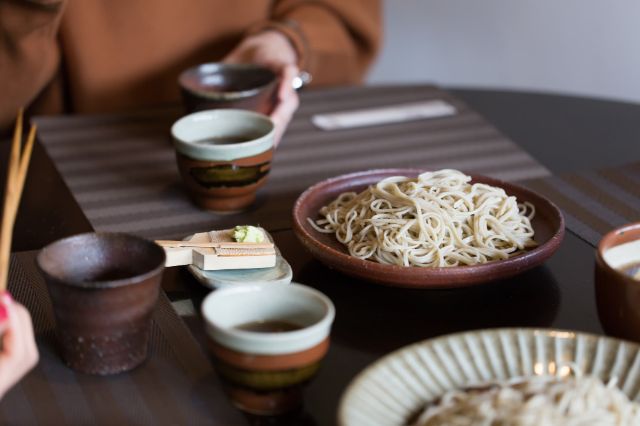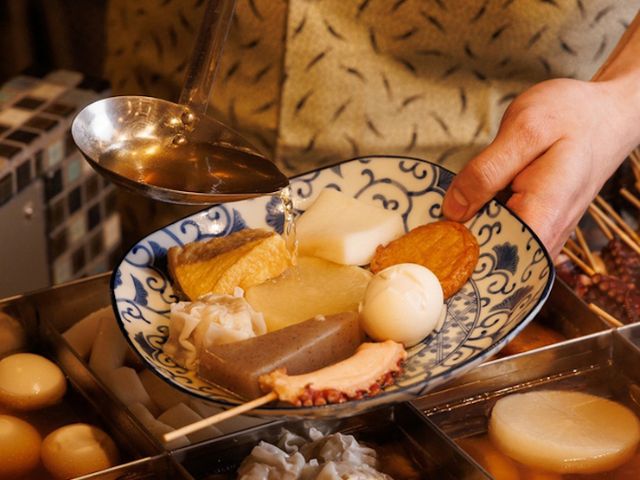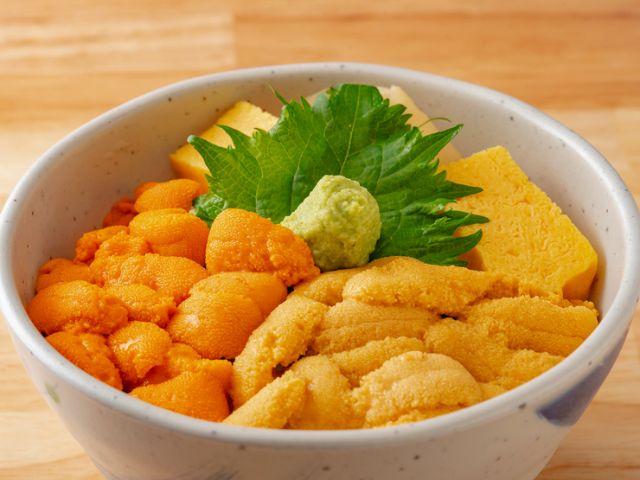[Tsukiji, Tokyo] Try One of Japan's Most Popular Noodle Dishes at a 180-Year-Old Soba Restaurant
![[Tsukiji, Tokyo] Try One of Japan's Most Popular Noodle Dishes at a 180-Year-Old Soba Restaurant](https://rimage.savorjapan.com/svj/image/discover_oishii_japan/1290/article_head.jpg?t=1580396418)
An Introduction to Soba
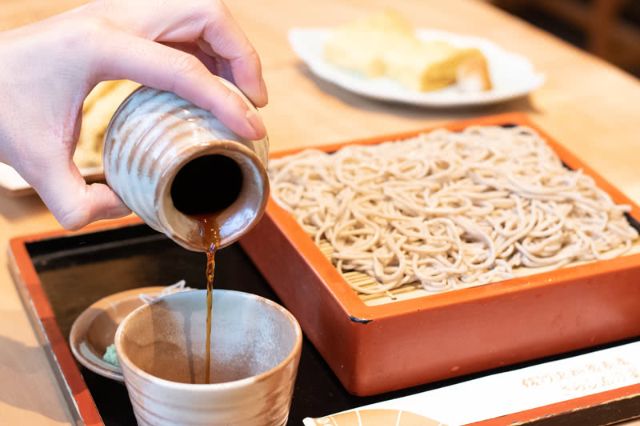
In addition to its bevy of health benefits, it also has a unique charm in that the noodles can be prepared and eaten in so many different ways. The most authentic way to make these noodles is to solely use just buckwheat flour and water (making it gluten-free!), which is referred to as "juwari", but many times they are made with salt and varying proportions of buckwheat flour and wheat flour to combat the brittle texture that comes about with the pure usage of gluten-free buckwheat.
![[Tsukiji, Tokyo] Try One of Japan's Most Popular Noodle Dishes at a 180-Year-Old Soba Restaurant](https://rimage.savorjapan.com/svj/image/discover_oishii_japan/1290/article_122416_w640z.jpg)
There are also many deeply ingrained cultural meanings tied to the noodles, which can be seen in the Japanese custom of enjoying soba during New Year's Eve. This is called toshikoshi soba (literally "new year soba"), and the long noodles symbolize prosperity and longevity. There's also another custom in which you send hikkoshi soba ("moving soba") to your neighbors as a greeting after you've moved into a new place. Just from this, you can tell that soba holds a deep historical and cultural meaning for the Japanese, so if you really want to get a taste of the local culture, soba should definitely be included in the list!
Personally, I like how there are no strict rules about how to eat and enjoy soba. You can slurp it down as a healthy fast food alternative, or take your time savoring the unique flavors and textures of this delicious dish. One little tip, however, is that if you order soba with tsuyu, then at the end of your meal, you’ll receive a small teapot-like container filled with soba-yu, the milky white water in which the soba was cooked. This water is to be poured into your leftover broth and enjoyed as a post-meal soup!
The History and Culture of Tsukiji Sarashina no Sato
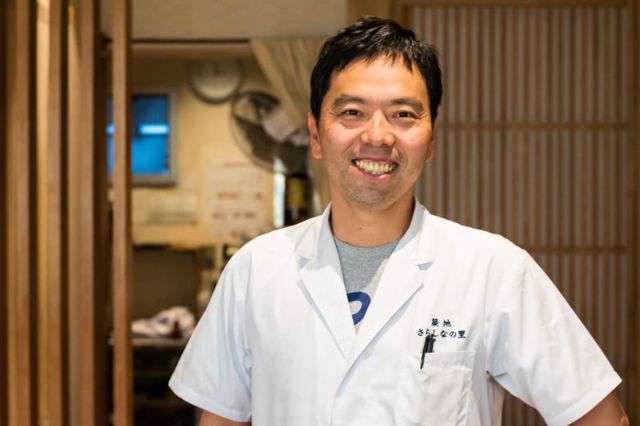
This traditional soba restaurant is just a short walk from Tsukiji Station. It first opened its doors in 1899, and it is currently managed by Shigeyuki Akatsuka, a fourth-generation soba master. “I’ve been running this shop since 1998,” Akatsuka told me. “It was my family’s business beforehand, but I worked here as well. I practiced soba making at another restaurant for one year before coming and taking over this restaurant.” Akatsuka is an interesting character; he's softly spoken and relaxed, but you can tell underneath that laid-back attitude is a man who is undeniably passionate about soba and his work.
![[Tsukiji, Tokyo] Try One of Japan's Most Popular Noodle Dishes at a 180-Year-Old Soba Restaurant](https://rimage.savorjapan.com/svj/image/discover_oishii_japan/1290/article_122418_w640z.jpg)
The Magic of Sarashina no Sato
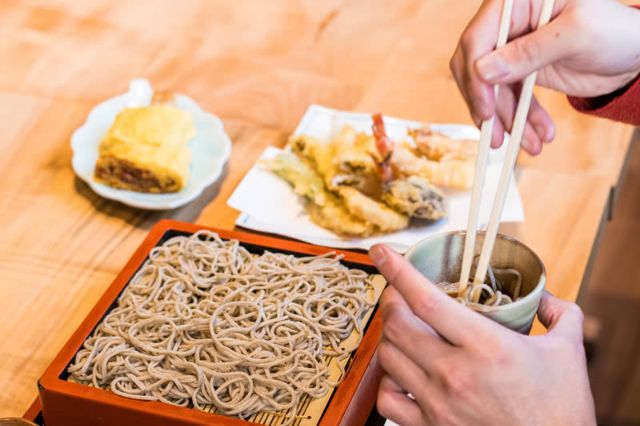
The menu has something for all budgets and tastes, too. If you're looking for a nice cheap bite, you can order a simple soba meal for as little as 700 JPY for lunch! But if you're looking for something a little more luxurious, there's a hot pot course menu for dinner, which includes chicken, sashimi, duck, and soba noodles for 5,000 JPY per person. The menu is incredibly extensive, offering as many as 10 basic cold soba dishes and 11 hot dishes - and that's just the beginning! There are also desserts, a list of classic side dishes like the deliciously fluffy tamagoyaki (Japanese egg omelette), and if you're feeling brave, chicken sashimi.
On the alcohol front, the menu is just as impressive, with 9 different types of sake and 12 types of shochu. Many of both are available by the bottle or glass. If you'd like something else, there's also beer, umeshu (plum wine), and whisky. If you're new to the world of Japanese alcohol, ask one of the friendly staff members for their recommendation on what type of drink would go best with your meal.
![[Tsukiji, Tokyo] Try One of Japan's Most Popular Noodle Dishes at a 180-Year-Old Soba Restaurant](https://rimage.savorjapan.com/svj/image/discover_oishii_japan/1290/article_122420_w640z.jpg)
Top Recommendations at Tsukiji Sarashina no Sato
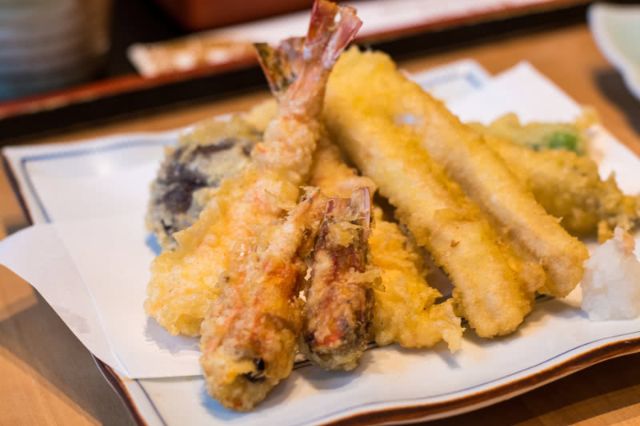
Tempura soba, also known as ten soba, is another highly recommended option. "Foreign guests really love shrimp tempura," he told me. He really hit the nail on the head with that one - I love shrimp tempura! I chose the tempura both because, yes, I love shrimp, but also, I thought it would be a great way to sample the fresh, seasonal vegetables fried to perfection. The combination of the tempura plate with chilled soba noodles is a perfectly harmonious balance of warm and crispy and cool and soft. The noodles were room temperature - the perfect accompaniment to the warm, almost glistening golden brown tempura that were just pulled out of the fryer.
![[Tsukiji, Tokyo] Try One of Japan's Most Popular Noodle Dishes at a 180-Year-Old Soba Restaurant](https://rimage.savorjapan.com/svj/image/discover_oishii_japan/1290/article_122422_w640z.jpg)
I'd always thought it was all about the noodles, but the dipping sauce for the soba is actually where the secret of soba resides. Mr. Akatsuka stated that, "the ingredients of a regular and high-end soba shop stay the same. The defining factor (for an excellent dish of soba) is the dipping soup and broth; that's where you can taste the difference in quality." Knowing this, I can taste the rich umami (Japanese savory flavor) depth given to Sarashina no Sato's broth. It makes me think - different stores must all have their own combination, like a culinary fingerprint.
![[Tsukiji, Tokyo] Try One of Japan's Most Popular Noodle Dishes at a 180-Year-Old Soba Restaurant](https://rimage.savorjapan.com/svj/image/discover_oishii_japan/1290/article_122423_w640z.jpg)
Unparalleled Craftsmanship
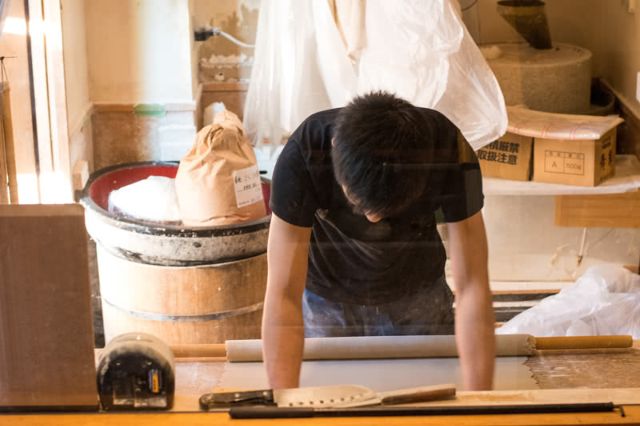
"The chefs that work here have a two-hour break each day, but during this time, they still spend some of it practicing making soba so they can continue perfecting their noodles," he stated. After thoroughly enjoying my meal, I'm definitely not surprised at the amount of work involved in each dish as I could taste that they were all lovingly prepared.
![[Tsukiji, Tokyo] Try One of Japan's Most Popular Noodle Dishes at a 180-Year-Old Soba Restaurant](https://rimage.savorjapan.com/svj/image/discover_oishii_japan/1290/article_122425_w640z.jpg)
Make Your Way Over to Tsukiji for a Bowl of Soba!
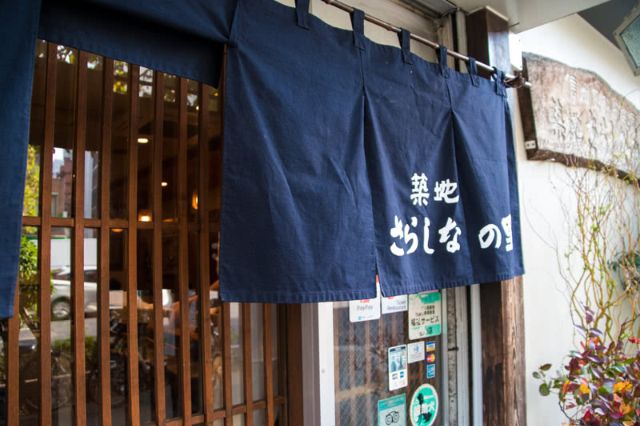
![[Tsukiji, Tokyo] Try One of Japan's Most Popular Noodle Dishes at a 180-Year-Old Soba Restaurant](https://rimage.savorjapan.com/svj/image/discover_oishii_japan/1290/article_122427_w640z.jpg)
Tsukiji Sarashina no Sato
[Saturday] 11:00 am - 3:00 pm
Closed: Sunday, National Holidays
Average price: [Dinner] 6,000 JPY / [Lunch] 1,200 JPY
Address: 3-3-9, Tsukiji, Chuo-ku, Tokyo Map
More Details Reservation
Disclaimer: All information is accurate at time of publication.
Thank you for reading our article.
Our goal is to take your culinary journey to the next level by helping you find the best restaurant. With SAVOR JAPAN, you can search and make reservations for
the Soba restaurants found in and around Tsukiji that fill your needs.
Discover more Soba restaurants by area
- Tokyo Area
- Near Tokyo
- Kyoto and Osaka Area
- Hokkaido Area
- Northern Honshu (Tohoku)
- Central Honshu (Chubu)
- Western Honshu (Chugoku)
- Shikoku
- Kyushu
- Okinawa and Ryukyu Islands
Discover more restaurants to eat Japanese Cuisine by area
Keywords
Related Articles
New Articles
Categories
Cuisine
- Bars (23)
-
Japanese Cuisine (675)
- Kaiseki (46)
- Nabe (19)
- Okonomiyaki (23)
- Shabu Shabu (36)
- Soba (17)
- Sushi (137)
- Tempura (18)
- Teppanyaki (46)
- Shojin Ryori (3)
- Tonkatsu (12)
- Kushiyaki (10)
- Yakitori (45)
- Sukiyaki (35)
- Japanese Cuisine (341)
- Oyster (2)
- Sashimi/ Seafood (19)
- Unagi (eel) (30)
- Motsu Nabe (offal hotpot) (6)
- Mizutaki (chicken hot pot) (3)
- Oden (8)
- Kaisendon (seafood bowl) (9)
- Udon (2)
- Taverns(Izakaya) Cuisine (124)
- Western Cuisine (42)
- Italian/French Cuisine (95)
- Yakiniku/Steak (223)
- Chinese Cuisine (26)
- Ramen (Noodles) Cuisine (26)
- Cafe/Sweets (60)
- Other Asian Cuisine (5)
- Global/International Cuisine (7)
- Alcohol (45)
- Other (11)
Area
- Shikoku (10)
- Kyoto and Osaka (344)
-
Tokyo (460)
- Tokyo (286)
- Ginza (44)
- Roppongi (22)
- Shibuya (26)
- Shinjuku (47)
- Asakusa (20)
- Ebisu (12)
- Tsukiji (10)
- Tokyo Landmarks (4)
- Ueno (24)
- Akihabara (9)
- Ikebukuro (12)
- Jiyugaoka, Denenchofu, Nakameguro (9)
- Shimokitazawa (4)
- Kichijoji (3)
- Tachikawa (1)
- Omotesando, Harajuku, Aoyama (18)
- Akabane (1)
- Kagurazaka (4)
- Akasaka (10)
- Odaiba (1)
- Tsukishima, Harumi, Toyosu (3)
- Near Tokyo (100)
- Okinawa and Ryukyu Islands (58)
- Hokkaido (124)
- Northern Honshu (Tohoku) (31)
- Central Honshu (Chubu) (144)
- Western Honshu (Chugoku) (32)
- Kyushu (92)
Archives
- December 2025(8)
- November 2025(4)
- October 2025(3)
- September 2025(6)
- August 2025(11)
- July 2025(19)
- June 2025(18)
- May 2025(34)
- April 2025(43)
- March 2025(30)
- February 2025(36)
- January 2025(26)
- December 2024(69)
- November 2024(31)
- October 2024(15)
- September 2024(39)
- August 2024(65)
- July 2024(31)
- June 2024(54)
- May 2024(61)
- April 2024(28)
- March 2024(31)
- February 2024(42)
- January 2024(32)
- December 2023(20)
- November 2023(5)
- October 2023(11)
- September 2023(7)
- August 2023(18)
- July 2023(8)
- June 2023(8)
- May 2023(18)
- April 2023(15)
- March 2023(1)
- January 2023(1)
- April 2022(2)
- March 2022(2)
- February 2022(1)
- January 2022(1)
- July 2021(1)
- March 2021(1)
- February 2021(1)
- December 2020(1)
- October 2020(1)
- September 2020(2)
- August 2020(10)
- July 2020(6)
- June 2020(9)
- May 2020(11)
- April 2020(8)
- March 2020(8)
- February 2020(13)
- January 2020(9)
- December 2019(24)
- November 2019(8)
- August 2019(14)
- July 2019(15)
- June 2019(18)
- May 2019(17)
- April 2019(16)
- March 2019(22)
- February 2019(22)
- January 2019(26)
- December 2018(34)
- November 2018(40)
- October 2018(32)
- September 2018(11)
- August 2018(8)
- July 2018(6)
- June 2018(9)
- May 2018(10)
- April 2018(21)
- March 2018(74)
- February 2018(39)
- January 2018(26)
- December 2017(60)
Keywords
- Omakase
- Accessible
- Affordable
- All-You-Can-Eat
- Amazing Scenery
- anime
- Art
- Autumn
- Awards
- Beer Gardens
- Breakfast
- Chef Recommendations
- Cherry Blossoms
- Chinese
- Close To Station
- Condiments
- Counter
- Coupon
- Crab
- Culture
- Dassai
- Dates
- delivery
- Early Summer
- Editor's Recommendation
- English Available
- Event
- Expo
- Fall Leaves
- Family-Friendly
- Famous Restaurant
- Famous Tourist Spot
- Fast Food
- festival
- fireworks
- Flower Farm
- Free Wi-Fi
- French
- Great Location
- Guide
- Hibachi
- hotpot
- How To
- hydrangea
- Hygiene
- Illumination
- Italian
- Izakaya
- Japanese
- Japanese alcohol
- jingisukan
- Kaiseki
- Kappo
- Kushiage
- Kushikatsu
- Kyoto
- Late-Night
- Lunch
- Manners
- matsusakagyu
- Michelin
- mizutaki
- Model Course
- monjayaki
- motsunabe
- Mt.Fuji
- Multilingual Menus
- Nabe
- Narita Airport
- New Year
- Ninja
- Noodle
- Oden
- Okonomiyaki
- omotenashi
- Onsen
- Osaka
- Osaka Station
- Photogenic Site
- pizza
- PR
- Private Room
- Ramen
- ranking
- Recipe
- Regional Cuisine
- Resort
- Rice Bowl Dish (Donburi)
- sacred places
- Sake
- Sakura
- Sashimi
- sea urchin
- Setouchi Area
- Shabu Shabu
- sightseeing
- Signature Dish
- Soba
- Solo Diners Welcomed
- Spicy Food
- Spring
- Steak
- Summer
- Sunflower
- Sushi
- takeout
- Teppanyaki
- Terrace Seating
- Tokyo
- Tokyo Experiences
- Tokyo Skytree
- Tokyo Tower
- unagi
- UNESCO
- Vegan
- Vegetarian
- Wagyu
- What Popular Gourmet Sites Recommend
- Whisky
- Wine Bar
- Winter
- Wisteria
- Workshop
- World Heritage Site
- World Writers
- Yakiniku
- Yoshoku
- Yuba
- Zen
Discover Restaurants By Area
-

Tokyo Area
Japan's largest city, Tokyo, is the center of culinary culture in Japan. Countless Tokyo restaurants serve every kind of food imaginable and the Toyosu fish market keeps restaurants stocked with the nation's finest fish.
-

Near Tokyo
Coastal areas, mountains and valleys surrounding Tokyo are bursting with tourist destinations, such as hot springs and ski slopes, where many unique foods are only available locally.
-

Kyoto and Osaka Area
The cities of Kyoto and Osaka, together with their surrounding areas, have greatly influenced Japan's culinary culture since the 7th Century. The region is renowned for its entertainment, Kobe beef, and wide-ranging traditional dishes.
-

Hokkaido Area
The island of Hokkaido is home to wide-ranging produce of the finest quality, such as rice, meat, vegetables, fish and fruit. Popular dishes from Hokkaido include robatayaki (food slowly roasted on skewers) and Sapporo miso ramen.
-

Northern Honshu (Tohoku)
The northern end of Japan's main island, Honshu, is renowned for its seasonal fruit and vegetables, nation-leading harvest of fish (especially tuna from Ohma), and delicious beef from Yonezawa, Sendai and Yamagata.
-

Central Honshu (Chubu)
Chubu is in the center of Japan's main island, Honshu, and its culinary culture reflects its position between Japan's western and eastern halves. Delicious Hida beef, world-famous Mount Fuji and many acclaimed sake breweries are in Chubu.
-

Western Honshu (Chugoku)
Chugoku, on the southwest of Japan's main island, is rich with diverse produce. Many of its products are praised as Japan's best, including Matsuba crabs from Tottori and oysters from Hiroshima. Its pears and muscats are also top grade.
-

Shikoku
The mild climate of Shikoku is ideal for growing citrus fruit such as sudachi. Shikoku is also famous for Sanuki udon noodles, huge yields of tiger prawn from Ehime Prefecture and the best torafugu (tiger globefish) in the country.
-

Kyushu
Western culture was first introduced to Japan through Kyushu, Japan's third largest island, where the influence of Portuguese and other western cuisine influenced the creation of a colorful culinary tradition.
-

Okinawa and Ryukyu Islands
Okinawa, Japan’s southernmost prefecture, is a treasure trove of distinctive dishes and drinks that have become popular throughout Japan, including Okinawa soba, unique sushi toppings and Awamori distilled liquor.
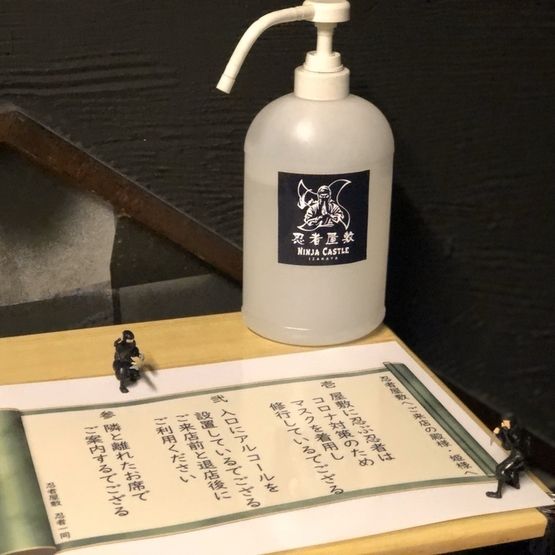
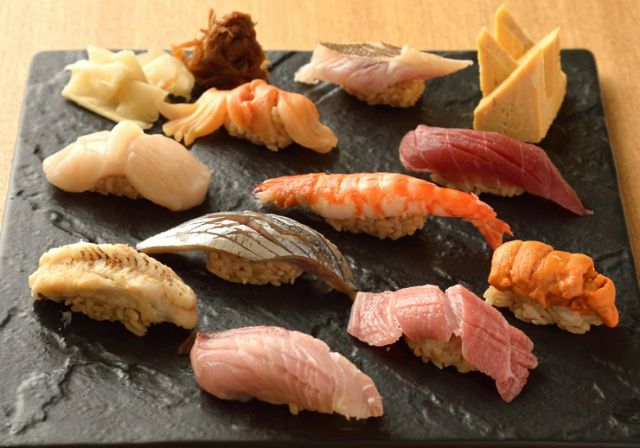
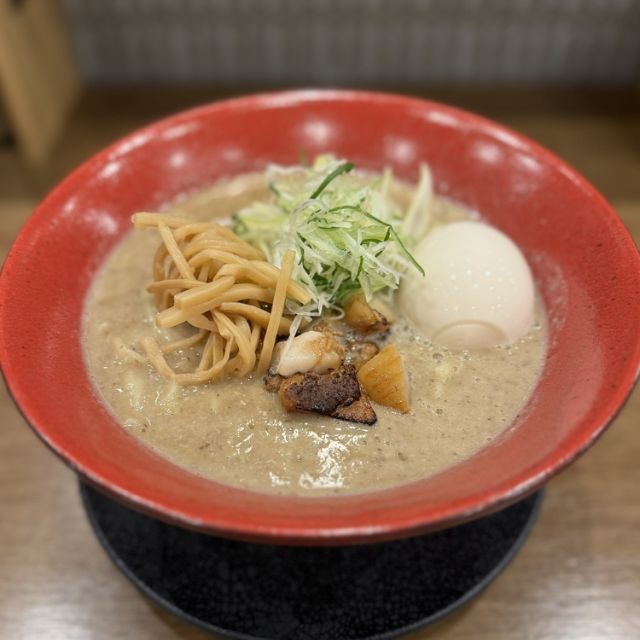
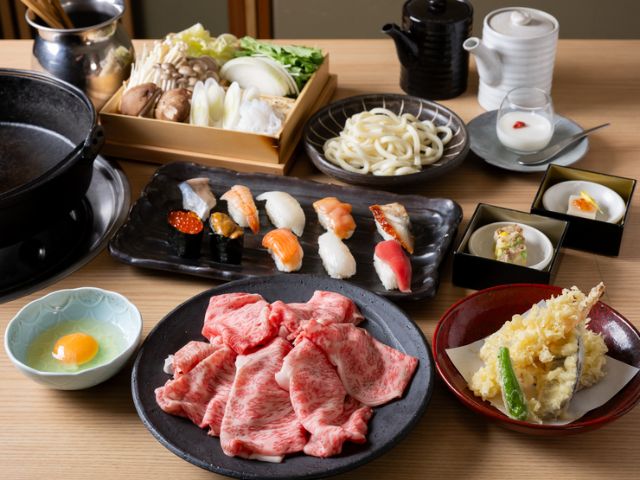
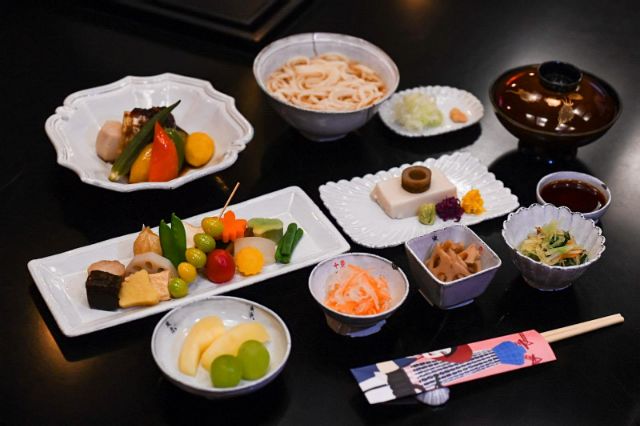
![[Find Your Favorite!] 12 Restaurant Categories You Must Know Before Traveling to Japan](https://rimage.savorjapan.com/svj/image/discover_oishii_japan/1288/article_head.jpg?t=1580444544)
